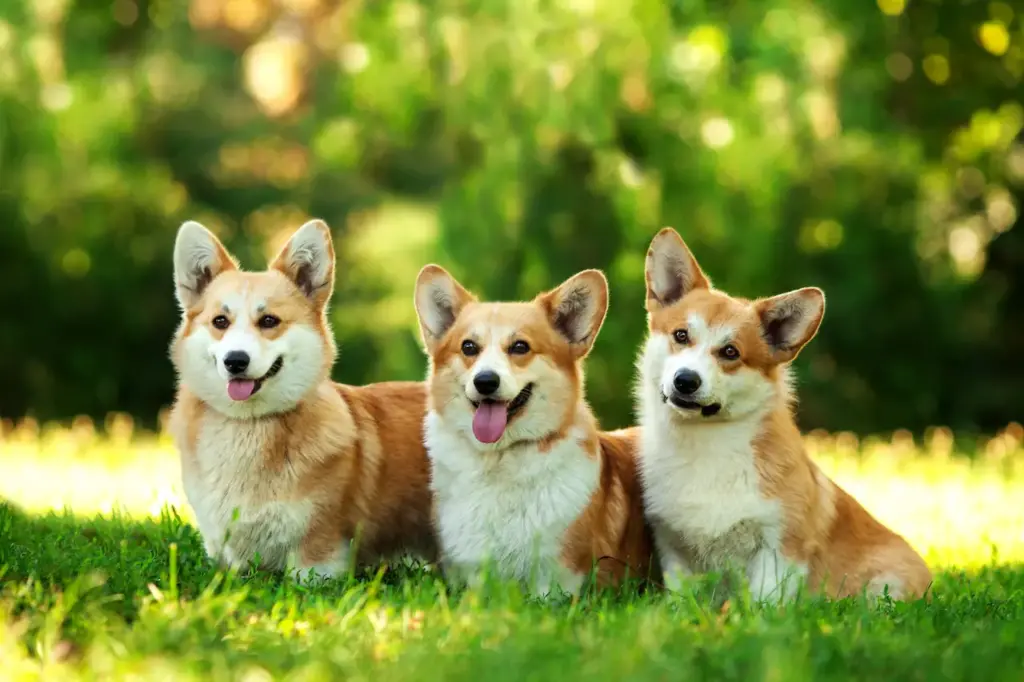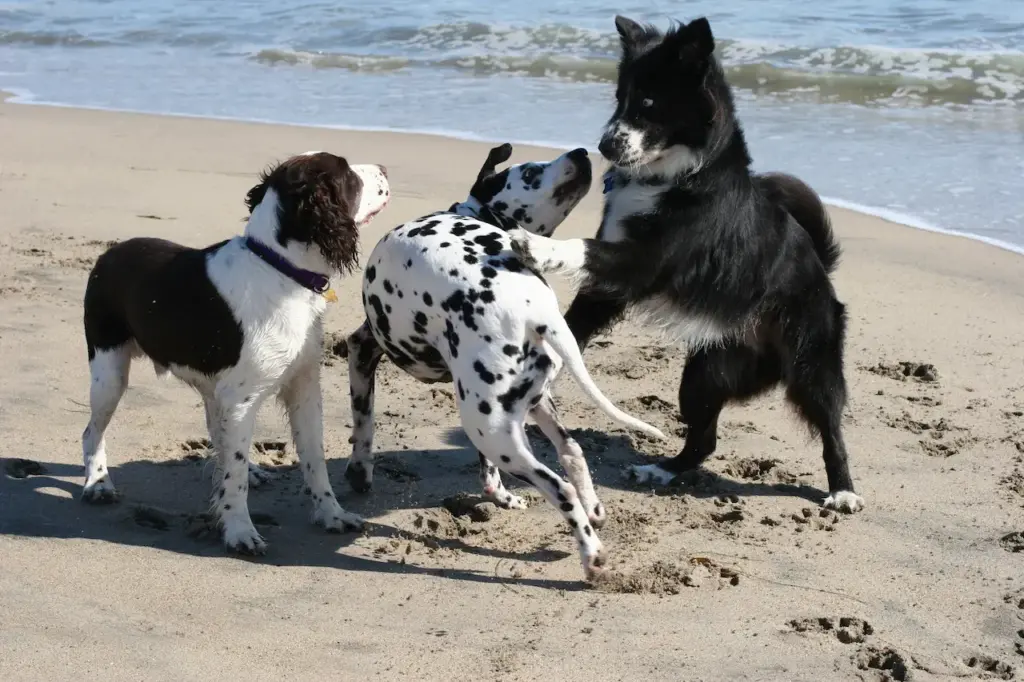What Eats Dogs?
Categories
- Accipitridae (1)
- Acrididae (1)
- Algae (2)
- Alligatoridae (1)
- Amoebidae (1)
- Amphibians (3)
- Anatidae (1)
- Anguillidae (1)
- Arachnids (2)
- Bears (2)
- Big Cats (3)
- Birds (13)
- Bovidae (5)
- Bufonidae (1)
- Camelids (1)
- Cameras (1)
- Canines (13)
- Caridea (1)
- Carnivora (10)
- Castoridae (1)
- Cats (5)
- Cebidae (1)
- Cephalopod (1)
- Cervidae (2)
- Cetacean (1)
- Chondrichthyes (1)
- Crocodilia (2)
- Crustaceans (4)
- Culicidae (1)
- Cyaneidae (1)
- Dasypodidae (1)
- Dasyurids (1)
- Deer (1)
- Delphinidae (1)
- Desktop (1)
- Didelphidae (1)
- Dinosaurs (1)
- Dogs (13)
- Dolphins (2)
- Echinoderms (1)
- Education (10)
- Elephantidae (1)
- Equine (1)
- Erethizontidae (1)
- Erinaceidae (1)
- Farming (1)
- Felidae (5)
- Fish (5)
- Food Chain (31)
- Food Web (2)
- Formicidae (1)
- Frugivore (1)
- Gaming (1)
- Gastropods (1)
- Giraffids (1)
- Great Apes (2)
- Health Conditions (3)
- Herbivore (4)
- Hi-Fi (1)
- Hippopotamidae (1)
- Hominidae (1)
- Insects (10)
- Invertebrates (2)
- Keyboards (1)
- Laptops (1)
- Leporidae (1)
- Mammals (23)
- Marsupials (4)
- Mephitidae (1)
- Microchiroptera (1)
- Mollusks (2)
- Mongoose (1)
- Muridae (1)
- Nocturnal Animals (1)
- Odobenidae (1)
- Omnivore (2)
- Phasianidae (1)
- Phocidae (1)
- Plankton (1)
- Plants (2)
- Primate (1)
- Ranidae (1)
- Reptiles (7)
- Rhinocerotidae (1)
- Rodents (5)
- Salamandridae (1)
- Scarabaeidae (1)
- Sciuridae (2)
- Sharks (1)
- Shellfish (1)
- Sound (1)
- Spheniscidae (1)
- Suidae (1)
- Superfamily Papilionoidea (1)
- Theraphosidae (1)
- What Eats (5)
Dogs hold a special place in many of our hearts and homes as beloved pets and companions. As highly adaptable canines, dogs have become domesticated partners living closely among humans while retaining much of their wild, carnivorous ancestry.
This dichotomy between tame pets and untamed beasts raises interesting questions about what eats dogs in the wild versus what we choose to feed them in our homes. To understand dogs fully requires examining both their place in nature as opportunistic hunters and scavengers as well as their roles in our families as animals dependent on us for their care and sustenance.
In this article, we will explore the diets and digestive capabilities of dogs, from wolves to pampered pets. It will uncover how dogs survive in the wild among potential predators while also looking at how we provide for man’s best friend.
Let’s learn more about the dietary life of one of the most charismatic and popular animals on Earth.
Table of Contents
ToggleWhat Eats Dogs? Predators of Dogs in the Wild
Dogs, being domesticated animals, are not usually preyed upon in the wild. However, feral and wild dogs can fall victim to a number of predators depending on the environment they live in. Here are some of the main predators of dogs in the wild:
Big Cats
Large feline predators like lions, tigers, leopards, and jaguars will prey on wild dogs if they are accessible. These big cats are powerful hunters and can take down prey much larger than themselves. A wild dog would make for an easy meal.
Bears
Bears, especially larger species like grizzly and black bears, will eat dogs when the opportunity arises. Their powerful jaws and sharp teeth and claws make them dangerous predators capable of killing a canine with ease. Smaller black and brown bears may also prey on dogs.
Wolves
Though related, wolves will hunt and kill wild dogs, viewing them as competitors. A pack of wolves can work together to take down a single wild dog or a small pack. Wolves are efficient hunters with strong jaws that can crush a dog’s bones.
Alligators and Crocodiles
In areas where dogs live near rivers, lakes, and marshes, large alligators and crocodiles pose a threat. Their immensely powerful bite force, combined with their stalking abilities from the water, make them dangerous to dogs that stray too close.
Large Birds of Prey
Some large eagles, hawks, falcons, and owls will opportunistically prey on wild canines. Their sharp talons provide weapons for hunting and killing dog-sized animals. Birds of prey have exceptional vision to spot dogs from the air.
Coyotes
In areas where habitats overlap, coyotes may prey on dogs, especially smaller ones. Coyotes hunt in packs, so a group can take down a single stray dog. They are clever, adaptive predators capable of taking down fairly large prey.
Snakes
Large constrictor snakes like anacondas, pythons, and boa constrictors pose a danger to dogs in the wild. Their coils can wrap around a dog and suffocate it to death before swallowing it whole. Venomous snakes like cobras may also prey on dogs.
In most cases, wild dogs are opportunistic prey for these predators. However, healthy adult dogs pose more difficulty and are usually safe from predation due to their speed, agility, and bite force. Sick, old, and young dogs face the most threat from predators.
What Do Dogs Eat? The Dog Diet in the Wild and at Home
Dogs are omnivorous canines, meaning they eat both plant and animal matter. Here is an overview of the dietary habits of dogs, both as wild animals and as domesticated pets.
Diet of Wild Dogs
Wild dogs survive by hunting prey and scavenging. Packs will work together to hunt, taking down large animals like deer, gazelles, rabbits, and small rodents. They also feed on carcasses left behind by other predators. The diet consists of:
- Meat: Wild dogs are hypercarnivores, acquiring over 70% of their diet from animal flesh. Meat from ungulates, rodents, birds, reptiles, amphibians, and fish provides essential proteins, fats, vitamins, and minerals.
- Organs: Dogs will eat the nutrient-rich organs of their prey, like the heart, liver, kidneys, and brain. Organ meats provide important iron, vitamins, and fatty acids.
- Bones: Wild dogs will crunch up and consume the bones of their prey to access the marrow inside. Bone marrow gives a fat and protein boost.
- Skin/Hide: The skin and fur of prey provide additional fat and protein to a dog’s diet in the wild.
- Fruit/Berries: Wild dogs supplement their diet with fruits, berries, and vegetation, which provide fiber, phytochemicals, and carbohydrates.
This combination of fresh raw meat, organs, fat, bones, and plant matter provides a nutritionally balanced diet for dogs in the wild.
Diet of Domestic Dogs
There are many options for feeding pet dogs, including:
Commercial Dog Food
Most domestic dogs eat commercially prepared dog food, either dry kibble, canned/wet food, or a combination. These foods provide a convenient way to give dogs a complete and balanced diet. There are many brands, formulas, and recipes to choose from.
Raw Food Diet
Some pet owners choose to feed homemade raw food diets meant to mimic a natural wild dog diet. These diets contain raw meat, bones, organ meats, eggs, dairy, and fruits/veggies. Advocates believe raw diets are healthier.
Home Cooked Food
Home-cooked meals made from quality ingredients can also make a nutritious diet for dogs. Pet owners can cook meat starchy foods like rice, leafy greens, eggs, dairy, fruits, etc. Following veterinary guidelines is important.
Leftover Table Scraps
Many dogs enjoy leftover people food scraps like bits of cooked meat, veggies, rice, pasta, and bread in moderation. These can supplement a regular dog food diet as treats.
There are many options for feeding domestic dogs according to your lifestyle and budget. Consulting your veterinarian can help determine the ideal diet for your individual dog’s health and nutritional needs.
Interesting Facts About the Dog Digestive System
Here are some fascinating facts about the curious aspects of the dog digestive tract:
- Dogs have premolars and molars specifically adapted for crushing bones and plant material. Their jaws generate a biting force of 200-450 psi.
- While eating, dogs barely chew their food into 5-10 pieces before swallowing. Their powerful stomachs are made to break down larger chunks.
- The stomach and small intestine combined only take up about 60% of the length of a dog’s digestive tract compared to 90% in humans.
- Gastric emptying time is much faster in dogs compared to humans – 4-8 hours vs. 12-16 hours. This allows dogs to eat one large meal per day rather than several small meals.
- Raw food diets are more digestible for dogs since cooking denatures proteins and starch, making them harder to break down.
Conclusion
Dogs are opportunistic canine predators and scavengers capable of surviving on a wide range of food sources. As pets, commercial dog foods provide balanced nutrition, while homemade diets can also be formulated.
While dogs can digest many things, poor diets can still lead to health issues. Understanding the diet and digestive system of dogs provides insight into how best to feed our canine companions.
With the right diet and care, dogs can live active, happy, and healthy lives while delighting us with their antics, affection, and loyalty.



